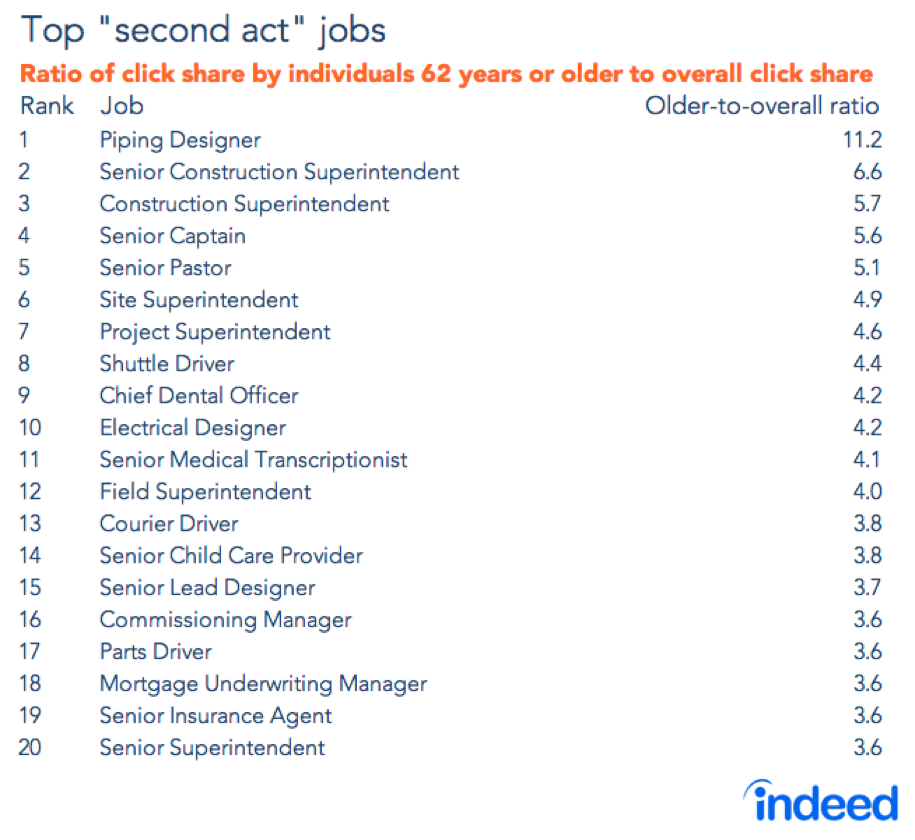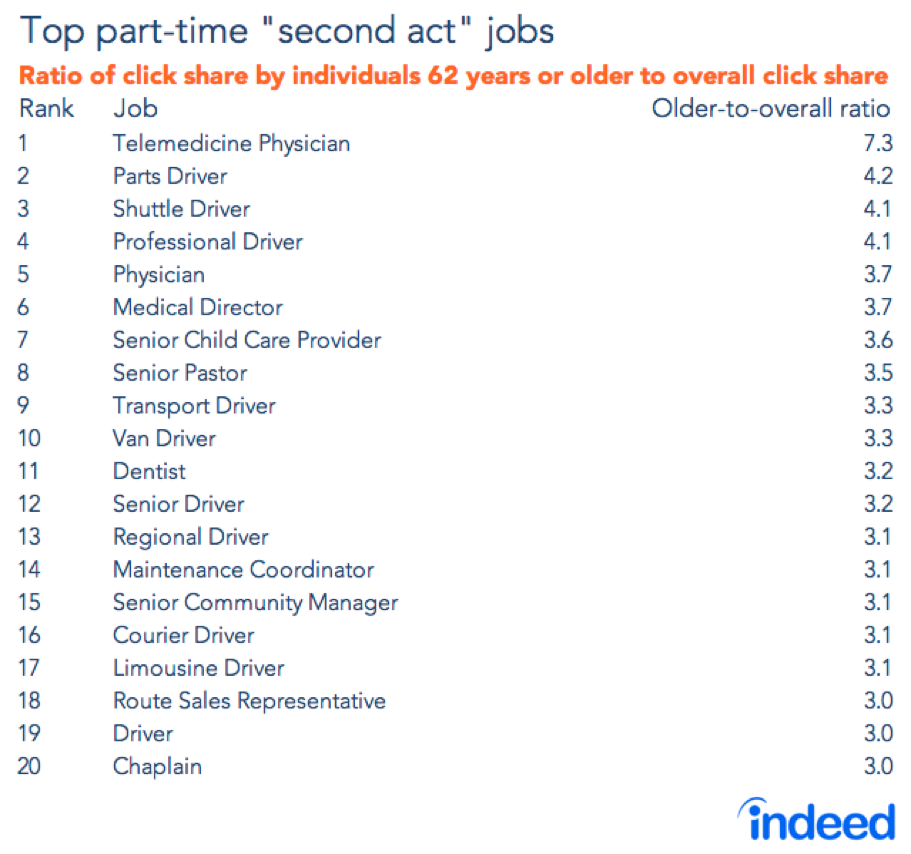As more Baby Boomers approach retirement, growing numbers are passing it up in favor of “second act” jobs — work during their retirement-age years, whether full- or part-time.
Recent estimates from the US Census Bureau show strong growth in the number of retirement-age Americans, which is putting pressure on pensions and health care programs including Social Security and Medicare. But as this avalanche of Americans approaches retirement age, second act job seekers will also reshape the labor market. Nearly 1 in 4 Americans over the age of 65 without a disability are participating in the labor force, a rate that has been rising steadily for the past decade, although it has been relatively flat since 2015.
New Indeed research pinpoints the top second act jobs clicked on disproportionately by Americans nearing retirement — those 62 years or older, the earliest age to qualify for Social Security. These jobs include a number of construction and transportation positions, as well as assorted superintendent roles and a few less-common jobs like pastor and boat captain.

To identify these jobs we calculated an “older-to-overall ratio” — the ratio of the share of clicks by individuals 62 or older to the click share of all users. For example, a job with a ratio of 5, means that older users direct five times more of their clicks to it than the typical user (see methodology for more details).
The top second act job is piping designer. This occupation often uses computer-aided design (CAD) to assist oil and gas companies. Similar job titles like senior lead designer and electrical designer are in the top 20. Other common second act jobs are construction positions, such as construction superintendent and senior construction superintendent, and transportation jobs including courier driver, shuttle driver, and parts driver. Some variation of the “superintendent” role was found six times in the top 20-second act jobs.
However, this focus on overall clicks misses a crucial distinction older job seekers make: full-time versus part-time. The part-time jobs that older Americans click on disproportionately include a number of driving roles like parts driver, shuttle driver, professional driver, van driver, and similar positions. Older workers flock to driving jobs for good reasons: it’s easily part-time, not physically demanding and, other than driving know-how itself, has few skill requirements. The list also has several part-time medical positions — telemedicine physician being number one. In addition, medical director, physician, and dentist are in the top 20. Perhaps many medical professionals nearing retirement want to continue working, but only part-time.

A multitude of factors is driving Baby Boomers toward longer careers, notably rising life expectancy and the need for greater retirement savings, especially in the wake of the Great Recession. As these Boomers work later into life, they search for jobs compatible with their skills and lifestyle.
Methodology
We examined the click behavior of Indeed users in the US for the two years ending June 1, 2018. Only jobs with at least 10,000 total clicks were considered. To generate the “older-to-overall ratio,” we calculated two metrics for each job title: the share of clicks by individuals with an estimated age of 62 or older for that job and the share of clicks by all users for whom we could estimate an age. Estimated ages were based on the resumes users uploaded to Indeed. We then took the ratio of the share of clicks by those estimated to be 62 or older versus the share of clicks by all users whose age could be estimated. Jobs with a ratio greater than 1 are positions which older users are disproportionately clicking on. Jobs with ratios below 1 are those for which older users show relatively less interest.






